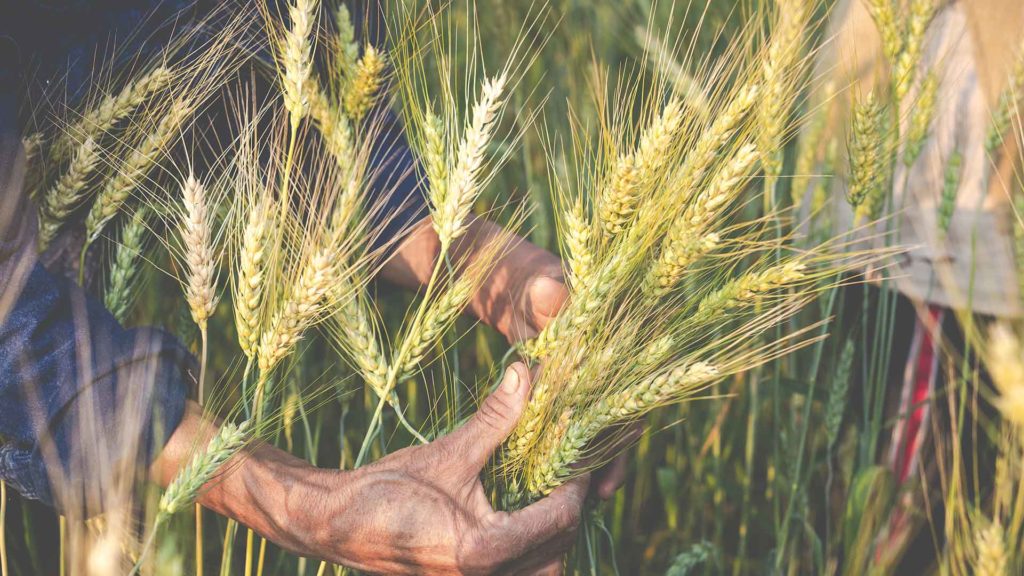Solving Food Security in Developing Nations
In 2006, the World Food Summit in a focused report on developing nations defined “food security” as a condition that exists when all people have, at all times, physical, social, and economic access to sufficient, safe, and nutritious food to meet their dietary needs and food preferences for an active and healthy life.
To this day, the concept of one’s ability to avail and access a proper nutritious and balanced diet to affirm food security for the global populace remains unchanged. Earlier in 1996, world leaders had come together in Rome for yet another session of the World Food Summit to affirm their commitment to fighting global hunger. The Food and Agriculture Organization of the United Nations (FAO) held the summit to respond to widespread undernutrition and growing concern about the capacity of agriculture to meet future food needs.

World Food Summit Perspective
The global think tank committed themselves to the cause of eradicating hunger from the face of the earth through sustainable practices, and the then FAO Director-General Jacques Diouf in 2009 labeling the over one billion hungry people in the world “our tragic achievement in these modern days” while stressing the need to produce food where the poor and hungry live and to boost agricultural investment in these regions.
Source: (World Summit on Food Security: World Summit http://www.fao.org/wsfs/world-summit/en/).
The gravity of the current food crisis is the result of 20 years of under-investment in agriculture and neglect of the sector, the Summit noted.
It was at that historic summit, that participating nations unanimously agreed to work to reverse the decline in domestic and international funding for agriculture and promote new investment in the sector, to improve governance of global food issues in partnership with relevant stakeholders from the public and private sector, and to proactively face the challenges of climate change to food security.
Hunger Level and Human Rights
Nations must achieve food security for the simple reason that the right to nutritious, balanced, affordable, and accessible food by their citizens is a human right. It is one of the most basic human rights.
In 2016, the International Food Policy Research Institute (IFPRI, US) published the Global Hunger Index (GHI) that indicated that the level of hunger in developing nations as a whole had decreased by 29 percent since 2000. “However, the disparity in hunger among the countries is still wide. The highest numbers of hungry people remain in Africa south of Sahara and South Asia (IFPRI, 2016),” the report noted https://www.globalhungerindex.org/ranking.html.
The GHI has indicated that “the world is not on track to achieve the second Sustainable Development Goal – known as Zero Hunger for short – by 2030. At the current pace, approximately 37 countries will fail even to reach low hunger, as defined by the GHI Severity Scale, by 2030.”
Is Food Security a Distant Dream?
While food security is not a concern for those in developed nations, there are countless others in underdeveloped regions of the world for whom sourcing food is a challenge.
As per the GHI, “far too many individuals are suffering from hunger and undernutrition — nearly 690 million people are undernourished, 144 million children suffer from stunting, a sign of chronic undernutrition, 47 million children suffer from wasting, a sign of acute undernutrition, and in 2018, 5.3 million children died before their fifth birthdays, in many cases as a result of undernutrition.”
The 2020 GHI scores have presented alarming levels of hunger in Chad, Timor-Leste, and Madagascar, in addition to Burundi, Central African Republic, Comoros, the Democratic Republic of the Congo, Somalia, South Sudan, Syria, and Yemen. South Asia on the other hand, has the highest number of undernourished people in absolute terms, with 255 million people undernourished in the region, as per GHI.
The food security challenge that the world has been grappling with since the second half of the last century, has only become increasingly complex over time. With more mouths to feed across the length and breadth of the globe, the task has indeed become more daunting.
The GHI has warned that at the current pace to eradicate hunger – which is not on track – about 37 countries will fail “even to reach lower hunger” as defined by the GHI Severity Scale by 2030. While the share of undernourished people – that is, people who consume too few calories—in the world has stagnated, the absolute number of undernourished people is on the rise.
As shocking as it might sound, over 840 million people would remain undernourished by 2030, even before taking into account the blow dealt with global economies by the COVID-19 pandemic.
In 2003, Prabhu L Pingali wrote a report “Sustaining Food Security In The Developing World: The Top Five Policy Challenges”(PDF) Sustaining food security in the developing world: The top five policy challenges indicating how urbanization and globalization are becoming pervasive, private sector involvement in agricultural research has been increasing at a very rapid pace around the world, and global concerns about the sustainable management of resources have been rising.
The Cornell University report by Pingali mentioned that the five challenges to sustain food security are:
- Provisioning the urban masses especially the urban poor with adequate amounts of food and nutrition
- Eliminating rural poverty and attacking the problem of chronic food insecurity
- Repositioning developing country agriculture in the context of globalization
- Dealing with rising transactions costs of technology access and technology use
- Sustainably managing the natural resource base.
From Farm to Fork Policies
Real-time assessments and short-term projections of acute hunger are available from multiple sources including the Famine Early Warning Systems Network (FEWS NET), the FAO’s Global Information and Early Warning System (GIEWS), and the Integrated Food Security Phase Classification (IPC).
Pandemics, plagues of locusts devastating crops, famine and flooding, nature of crops, impact food security.
Although global think tanks addressing concerns about food security have raised doubts and concerns about how the world may tackle the impending crisis to speed up to feed, policy initiatives at both local and international levels, have to a substantial extent, progressed in many parts of the world to attempt food security, providing hope for policymakers and global populace.
GHI has said the trends over the last one to two decades have indicated improvements in most countries. It said even in those economies where hunger and undernutrition were considered extremely alarming two decades ago, the situation improved dramatically.
The world economies would, however, need multi-pronged strategies to respond to multiple crises simultaneously – be it those about health, environment, economic, and food security, amongst others. The GHI, however, has said with persistence, collective effort, and the dedication of sufficient resources, the world can overcome these crises.
To ensure the right to adequate and nutritious food for all and to end hunger by 2030, we must not only reshape our food systems to become fair, healthy, resilient, and environmentally friendly but also integrate them into a broader political effort to maximize the health of humans, animals, and our planet, GHI said.
- There is a need to support smallholder farmers so that they become sustainable in the global mission of achieving food security and become diversified producers. Respective governments, donor agencies, the private sector, and the non-governmental organizations working in the sector have to stand by farmers, promoting indigenous agricultural knowledge and supporting innovation.
- Farming must be made remunerative to ensure that families and the new generation stick to the sector and do not abandon it for more remunerative sectors. The local policies must support and promote regional crops, strengthen food markets, and must offer fair farm-gate prices, and better links between rural and urban areas.
- The GHI has said food should be priced not only by its weight or volume but also by its nutrient density, its freedom from contamination, and its contribution to ecosystem services and social justice. And hence, the need to promote sustainable agricultural practices to affirm biosecurity across the value-chain – from farm to fork.
- The think tanks have reiterated the need to pin accountability on the stakeholders to achieve food security. Respective governments must hold all players in the value chain legally accountable as outlined in the UN Guiding Principles on Business and Human Rights.
- Underdeveloped countries have to stand by the poor, marginalized groups of peasants and work out strategies for syncing production with demand and crop remunerations to serve the cause.
- Even as the focus remains on agriculture and increasing crop yields, government policies across the underdeveloped nations must be holistic to ensure accessible local and national water, sanitation, and hygiene systems that are crucial to the health of its citizens.
- Hunger deaths are unpardonable and hence, all governments need to track and act upon malnutrition and hunger. Updated comprehensive statistics disaggregated by income, subnational location, and gender must be available at all times to bolster the efforts of policymakers.
- On a global level, governments must cooperate to bring an end to hunger and food insecurity. There is a need to eliminate trade inequities such as high-income countries’ nontariff trade barriers and create market incentives for sustainable food economies.
- The GHI has said existing human rights-based multilateral mechanisms and international standards, such as the Committee on World Food Security, must be strengthened to support inclusive policy-making and sustainable food systems, while governments must use the UN Food Systems Summit, to reinforce their commitments to equitable and sustainable development.
Thanks to forward-looking practices that increased cereal yields and saw governments spending more on agriculture as a share of GDP, the prevalence of undernourishment in South Asia has declined.
Mazhar Yasin Mughal and Charlotte Fontan Sers in 2020, published their study “Cereal Production, Undernourishment, And Food Insecurity In South Asia” observing that South Asia remains one of the major strongholds of hunger in the world, although, following the Green Revolution, cereal production in the countries of this region tripled during the second half of the 20th century.
The duo concluded that the production and yield of cereals have a role to play in lowering the extent of undernourishment. “A 1% increase in cereal production and yield is associated with up to 0.84% decrease in the prevalence of undernourishment. The impact is significant over 3 years. The positive effect is particularly evident in the case of rice and maize production. An improvement is seen in the aspects of availability, stability, and utilization of food security but not in the aspect of access. The results explain, in part, how South Asian nations have managed to stall relative increases in extreme hunger and food insecurity,” reads their abstract.
Boron and Food Security
Boron plays a significant role in crop production and its management. At a time when global policymakers are contemplating measures to tackle hunger and manage food, boron can show a way out.
Boron is a metalloid, a chemical element with the atomic number 5. Found in nature as borax, or sodium tetraborate decahydrate (Na2B4O7·10H2O), it is found naturally on Earth throughout the world, including in seawater and soil.
In 2014, A Krishna Chaitanya, Biplab Pal, Sajal Pati, and Shrikant Badole from the Department of Agricultural Chemistry and Soil Science, West Bengal, India published a study entitled “Role of Boron in Crop Production and Its Management”.
The researchers pointed out:
- Boron is responsible for cell wall formation and stabilization, lignifications and xylem differentiation and boron deficiency causes a remarkable decrease in the production of indole acetic acid (IAA), which induces calcium deficiency.
- Significantly, boron imparts drought tolerance to the crops.
- Plays a pivotal role in pollen germination and pollen tube growth in cereals and oilseeds.
- Regulates K/ Ca ratio and sugar translocation in tuber crops like potato, sugarbeet, etc.
- Essential for cell division & protein synthesis.
- Facilitates the transport of potassium in guard cells.
- Reduces diseases like Fusarium and Verticillium, potato wart, and clubroot of crucifers.
Boron deficiency in plants causes chlorosis and in case of severe conditions, plants die. Crops including rice, wheat, barley, mustard, cotton, carrot, cauliflower, tomato, and many more suffer due to boron deficiency.
Food scientists assert boron fertilizers can aid tackle the problem. Many compounds have been recommended as a source of boron for soil and foliar application including Borax, Sodium tetraborate, FErtilizer Borate 68, Boric acid, Solubor, Colemanite (Portabor), Boron frits (Complex borosilicates). Both soil and foliar application methods of boron are effective in improving crop yield, produce quality, concentration and uptake of boron, and economic returns.





